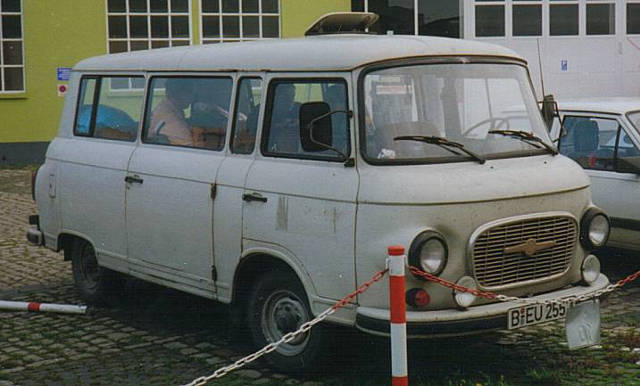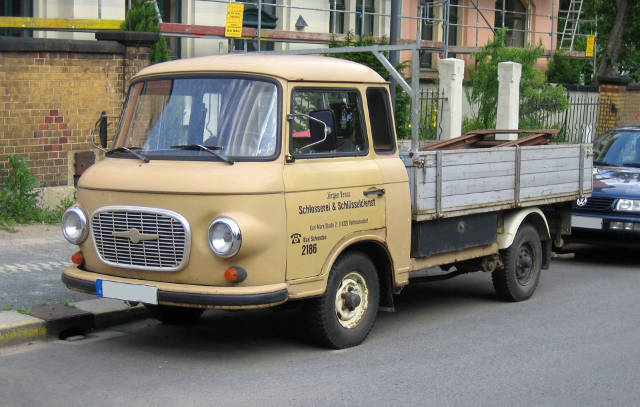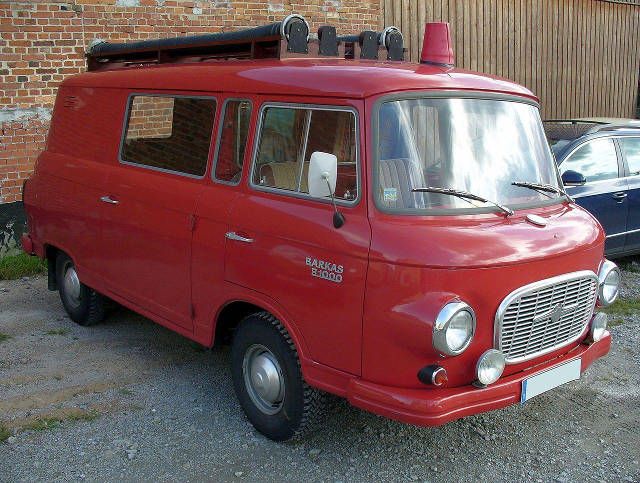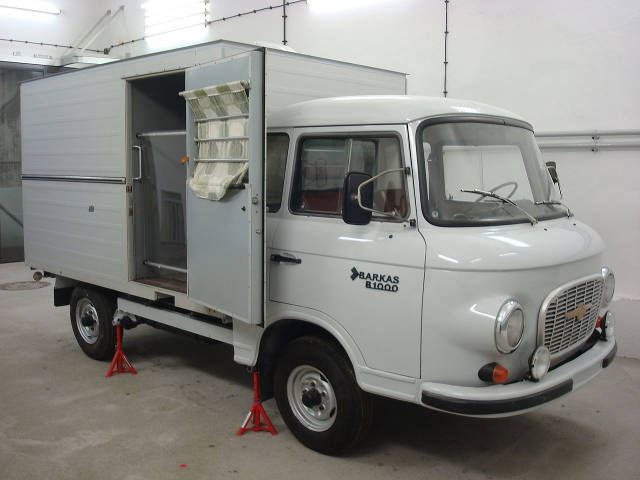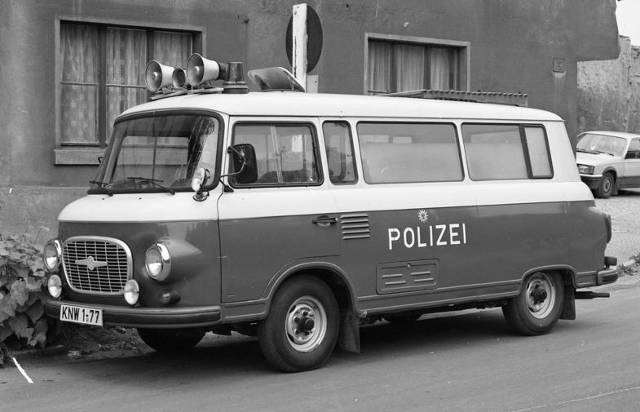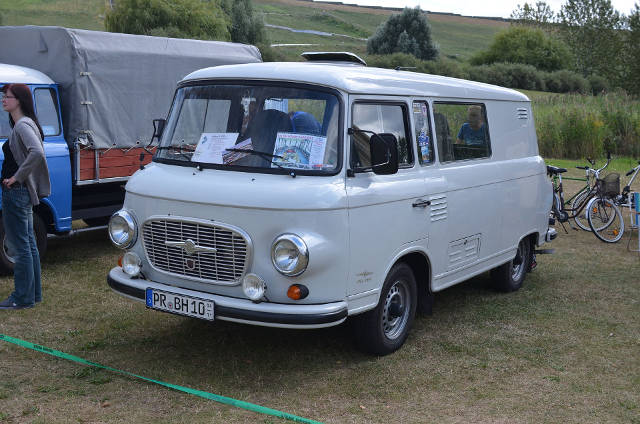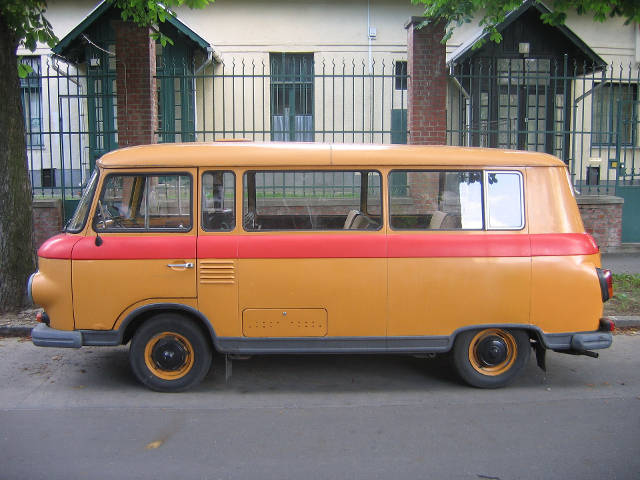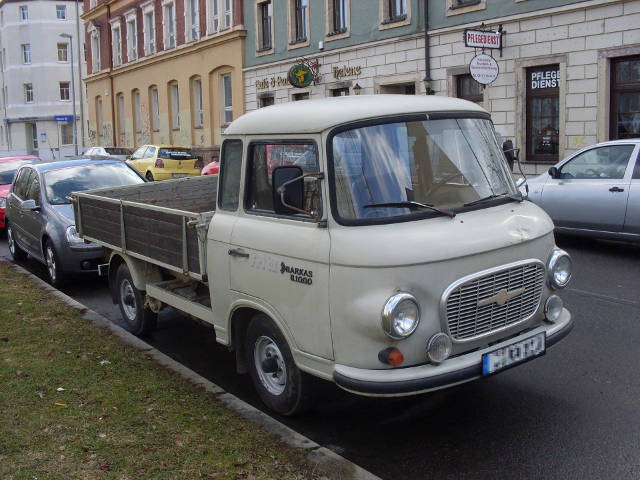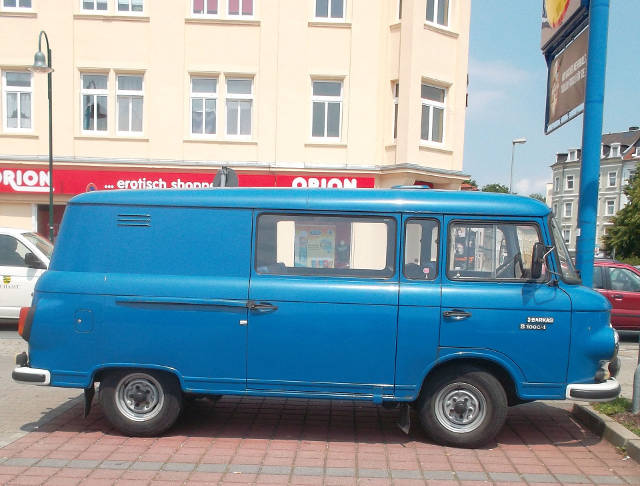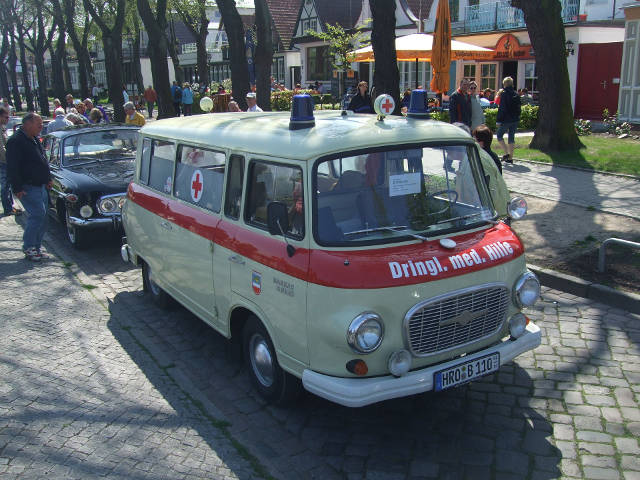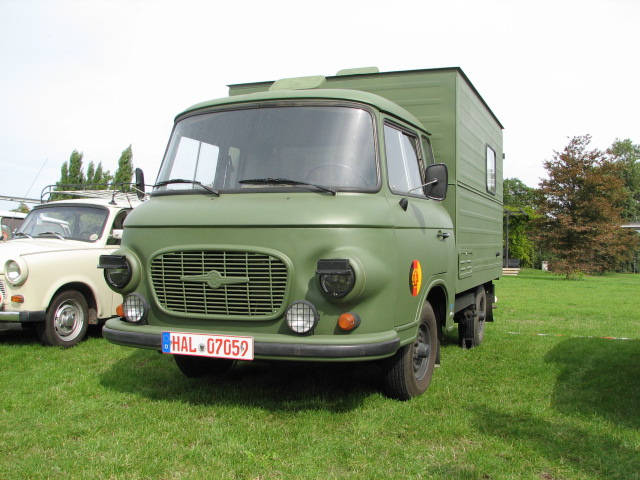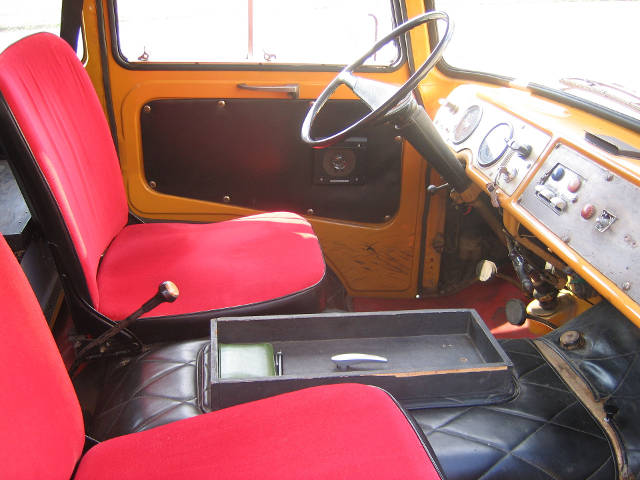More Barkas B1000 pictures featuring various variants Videos
Barkas B1000 photos of variants and interior with details
Barkas B1000 specifications and basic information
Barkas B1000 specs:
Other names IFA Barkas
Manufacturer VEB Barkas-Werke
Presented Leipzig 1962
Period of production 1961-1991
Place of production German Democratic Republic Karl-Marx-Stadt
Predecessor Barkas / Framo V 901/2
Successor no
Technical data
Delivery segment
Body type van, minibus, pick-up, body for building
R3 engines: 0.9 l with 43 hp
R3: 1,0 l with 46 hp
R4: 1,3 l with 58 hp
4-speed manual gearbox
Type of front drive
longitudinal motor at the front
Length 4595 mm
4725 mm (HP)
4555 mm (FR)
Width 1860-1925 mm
Height 1910-2280 mm
Wheelbase 2400 mm
Own weight 1275-1715 kg
Capacity. fuel tank 42/43 l
70 l (HP / FR)
Number of seats 2-8
Load capacity 625-1050 kg
More Barkas B1000 specifications and basic information Videos
Barkas B1000 price in the world
Barkas B1000 pricing for used cars:
Used Barkas B1000 price starts from £2,000 in the United Kingdom (UK)
Used Barkas B1000 price starts from 2,200 euros in the Europe (France, Germany, Italy)
Barkas B1000 video featuring the minibus passanger model
Barkas B1000 data and information about available variants
Barkas B1000 – delivery van and minibus produced in the years 1961-1991 in the IFA reunification of the VEB Barkas-Werke Karl-Marx-Stadt (now Chemnitz) in the former GDR. The only car of this class produced in the GDR.
At the end of the 1950s, work was begun on the construction of the new Barkas B1000 delivery van to replace the Barkas / Framo V 901/2 (derived from the pre-war era with a classic truck layout with a bonnet) . The new model has introduced state-of-the-art design solutions, including the wagon body, and has been developed using the Wartburg 311 passenger car construction. The Barkasa B1000 is also powered by this model. It was originally a three-cylinder, two-stroke gasoline engine type AWE 311 with a displacement of 900 cm³ and a power of 43 hp. The drive unit was locked with a 4-speed manual gearbox. Already in 1961 it was replaced by a two-stroke Wartburg 312 AWE 312 engine with a displacement of up to 992 cm³ and a maximum output of 46 hp. Thanks to the front axle and the independent suspension of the wheels, it was possible to achieve a flat floor in the cargo area, with a low load (440 mm above the ground). The cargo volume was 6,4 m³, the payload was 1 tonne.
Versions
These cars were manufactured in the following versions:
KA – Kastenwagen – Closed box double cab, no glazing of the cargo
KM – Kasten-Mehrzweckwagen – cargo van, four- or five-seater (semi-closed double cabin, 2/3 persons in the second row of seats in the cargo compartment), one left side window in the cargo compartment and one in the right door,
KB – Kleinbus – eight-seat minibus (semi-closed double cab, 6 persons in the cargo compartment on 2 rows of seats), full glazing of the cargo compartment,
KK – Krankenwagen – emergency ambulance – ordinary body, full glazed, partly covered
KK / SMH-3 – ambulance with a new plastic body with raised roof, manufactured since 1983, carved by Karosseriewerk in Parkentin (producing caravans) and equipped by VEB Labortechnik Ilmenau
HP – Pritschenfahrzeug – box truck with a double cabin
FR – Fahrerhaus-Rahmenausfuehrung – chassis for construction (there were 13 variants of serial special construction on this chassis, including a van)
More Barkas B1000 data and information about available variants Videos
My Barkas B1000 Blog!
Barkas B1000 was truck made in GDR.
View more about Barkas B1000 at Barkas B1000 Wiki Page.
